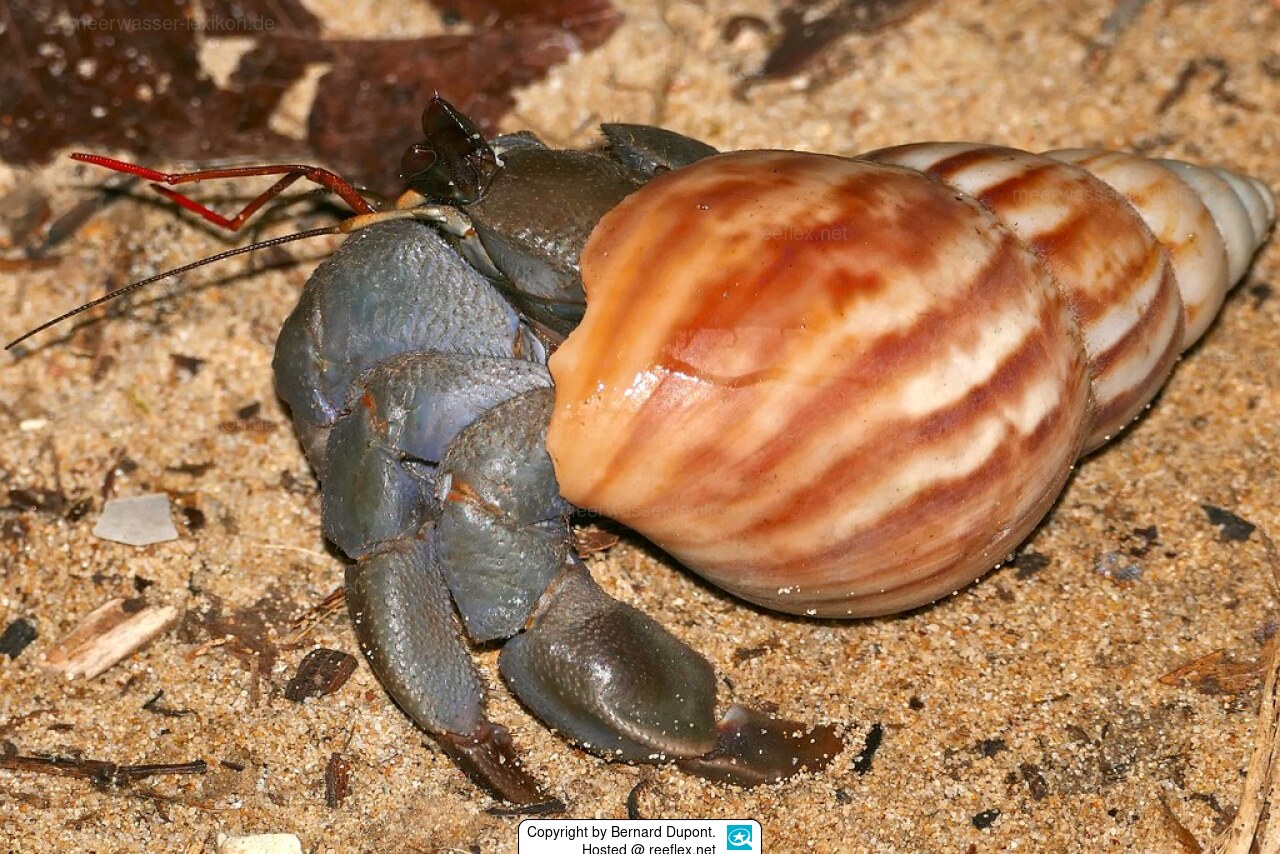Info
Coenobita violascens Heller, 1862
Hermit crabs (Coenobitidae) are adapted to life on land except for the larval stage. They live in tropical regions in different habitats, but often near the beach. Except for the palm thief (Birgus latro), all other land hermits need a suitable empty snail shell to protect their abdomen.
The purple hermit crab lives supralitorally. Juveniles are often found in mangrove forests, while adult hermits are often found on beaches.
Description: The entire body is purple, but varies from light lavender to dark purple. The hermit has a dark brown spot on the outer underside of the palm of the left scissors. Juveniles are pale to orange or red, with colors becoming darker as they age. The eyes are elongated and the stems are almost entirely black.
Eyes – elongated, eyestalks typically dark
Shield – punctate, no bristles or tubercles
Scissors - bristles on the upper edge of the palm, scattered tubercles on the lower outer surface
Color: Juveniles orange/white/brown, turns purple in adulthood, antennae are orange
Preferred snail shells: Terebridae and whelks
The larval release behavior of coenobitid crabs is generally classified into three types in relation to their contact with seawater:
(1) Females immerse themselves in seawater and release their larvae directly into the sea;
(2) females do not dive into seawater and wait until they encounter a wave, and hatched larvae are then washed into the sea by outgoing waves;
(3) Females do not submerge in seawater and deposit their embryos on surfaced substrates before hatching as waves move away from shore.
Compared to its closest relative, Coenobita cavipes, Coenobita violascens is significantly larger, protrudes further physically from the shell, and is unable to retract its left claw into the shell opening.
Synonymised names
Cenobita violascens Heller, 1862 · unaccepted > superseded combination
Hermit crabs (Coenobitidae) are adapted to life on land except for the larval stage. They live in tropical regions in different habitats, but often near the beach. Except for the palm thief (Birgus latro), all other land hermits need a suitable empty snail shell to protect their abdomen.
The purple hermit crab lives supralitorally. Juveniles are often found in mangrove forests, while adult hermits are often found on beaches.
Description: The entire body is purple, but varies from light lavender to dark purple. The hermit has a dark brown spot on the outer underside of the palm of the left scissors. Juveniles are pale to orange or red, with colors becoming darker as they age. The eyes are elongated and the stems are almost entirely black.
Eyes – elongated, eyestalks typically dark
Shield – punctate, no bristles or tubercles
Scissors - bristles on the upper edge of the palm, scattered tubercles on the lower outer surface
Color: Juveniles orange/white/brown, turns purple in adulthood, antennae are orange
Preferred snail shells: Terebridae and whelks
The larval release behavior of coenobitid crabs is generally classified into three types in relation to their contact with seawater:
(1) Females immerse themselves in seawater and release their larvae directly into the sea;
(2) females do not dive into seawater and wait until they encounter a wave, and hatched larvae are then washed into the sea by outgoing waves;
(3) Females do not submerge in seawater and deposit their embryos on surfaced substrates before hatching as waves move away from shore.
Compared to its closest relative, Coenobita cavipes, Coenobita violascens is significantly larger, protrudes further physically from the shell, and is unable to retract its left claw into the shell opening.
Synonymised names
Cenobita violascens Heller, 1862 · unaccepted > superseded combination







 Bernard Dupont, Frankreich
Bernard Dupont, Frankreich










